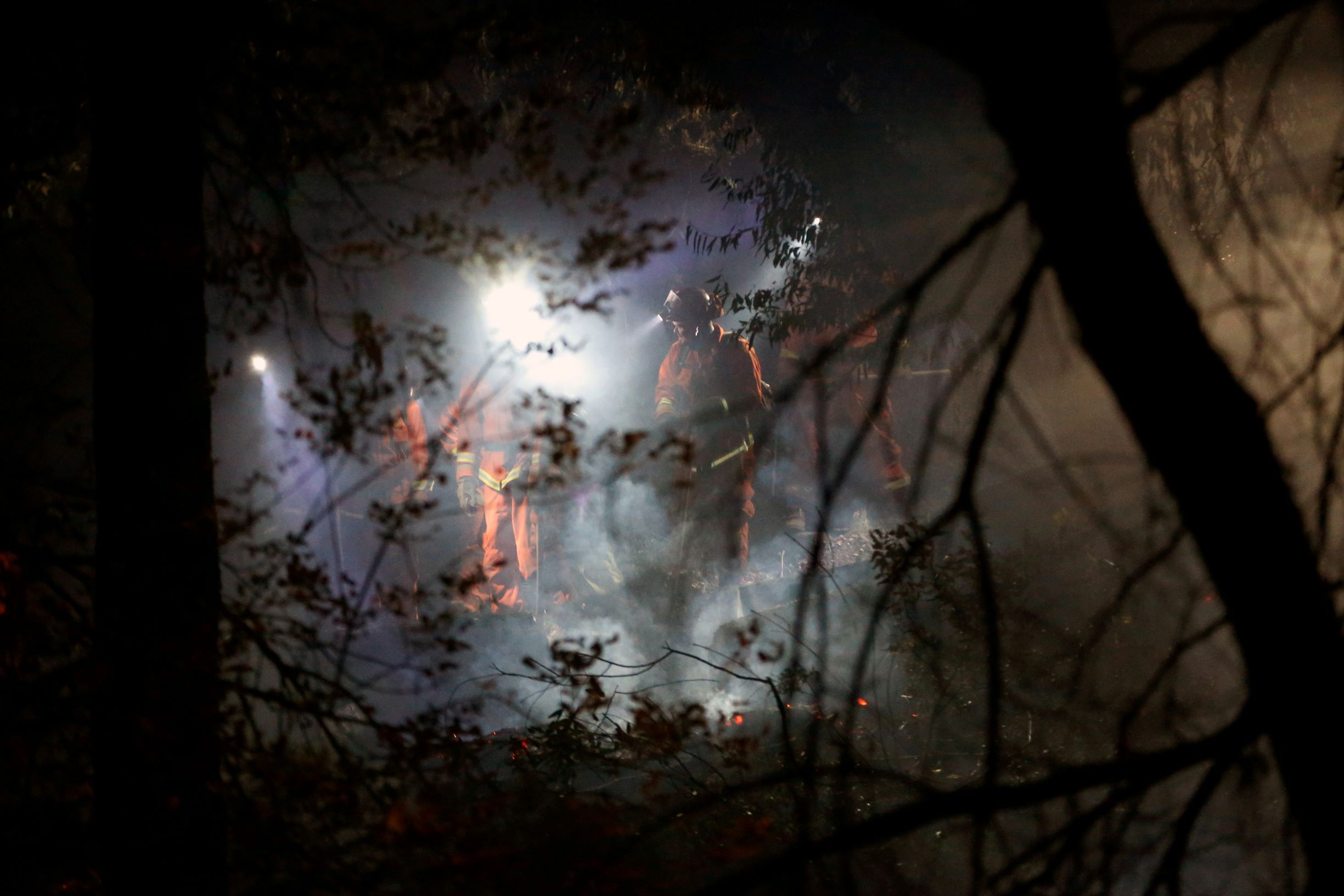
Dangerous dry winds forecast to sweep into fire-plagued Los Angeles
By Steve Gorman
LOS ANGELES (Reuters) – Extraordinarily dry, prolonged Santa Ana winds are predicted to gust through Southern California on Wednesday, prompting strong warnings from meteorologists as residents contend with damaging wildfires.
It was a daunting forecast for firefighters battling a 600-acre (240-hectare) blaze consuming the shrub-covered hills near the Getty Center museum in Los Angeles that has displaced thousands of residents. A new brush fire erupted on Wednesday morning in nearby Simi Valley in Ventura County, prompting officials to order mandatory evacuations in the suburbs around the Ronald Reagan Presidential Library.
The National Weather Service issued an “extreme red flag” warning for wildfires in Los Angeles and Ventura counties.
“I don’t know if I’ve ever seen us use this warning,” said forecaster Marc Chenard. “It’s pretty bad.”
Statewide, the weather service issued warnings of dangerous fire weather conditions covering more than 34,000 square miles (88,000 square km), encompassing some 21 million people. Scientists have linked an increase in frequency and intensity of wildfires to climate change.
The Santa Ana winds are a regional weather phenomenon that sends gusts westward off the desert out to the Southern California coast. They are forecast to reach sustained speeds of 50 to 70 miles per hour (80 to 110 km per hour) on Wednesday and Thursday, raising the risk of sparks and embers being whipped into fresh wildfires in unburned areas.
Los Angeles Fire Chief Ralph Terrazas said extremely high winds could also force the grounding of water-dropping helicopters, a vital component of the firefighting arsenal.
City arson investigators say the Getty fire was likely caused by a broken tree branch being blown into power lines during high winds on Monday morning.
Electricity remained cut off to roughly half a million homes and businesses in Northern and Central California on Tuesday as a precaution by the state’s largest utility.
Governor Gavin Newsom has accused utilities of failing to adequately modernize and safely maintain their power systems.
GAINING GROUND
An army of some 1,100 firefighters battled the Getty fire Tuesday in a narrow window of slower winds. By early Wednesday, crews had managed to contain about 15 percent of the blaze.
In Northern California, where firefighters struggled for a sixth day against a 76,000-acre (30,760-hectate) blaze in Sonoma County’s winemaking region, high-wind forecasts prompted Pacific Gas and Electric Co <PCG.N> to impose a new round of blackouts for nearly 600,000 homes and business.
That included about 400,000 customers blacked out in a power shutoff that PG&E instituted days earlier, the company said.
Early Wednesday, PG&E announced that it had restored about 73 percent of the 970,000 or so customers affected in earlier shutoffs.
Utilities serving Southern California’s more highly urbanized areas have imposed smaller-scale outages.
PG&E has been implicated in the Sonoma County blaze, dubbed the Kincade fire. The utility acknowledged last week that the Kincade fire broke out near a damaged PG&E transmission tower at about the time a live high-voltage line carried by that tower malfunctioned.
The company filed for bankruptcy in January, citing $30 billion in potential liability from a series of deadly fires sparked by its equipment in 2017 and 2018.
Citing progress made against the Kincade fire, Newsom said the number of evacuees in Northern California had diminished from 190,000 at the peak of that blaze to 130,000 on Tuesday.
Property losses from the Kincade, listed at 15% contained, were put at 189 homes and other structures, double Monday’s tally.
The size of the Getty fire’s evacuation zone was reduced by roughly 3,000 homes on Tuesday but residents of about 7,000 homes remained displaced, fire officials said. At least a dozen homes have been destroyed so far.
(Reporting by Steve Gorman in Los Angeles and Jonathan Allen in New York; additional reporting by Rollo Ross in Los Angeles and Rich McKay in Atlanta; Editing by Angus MacSwan and Jonathan Oatis)














